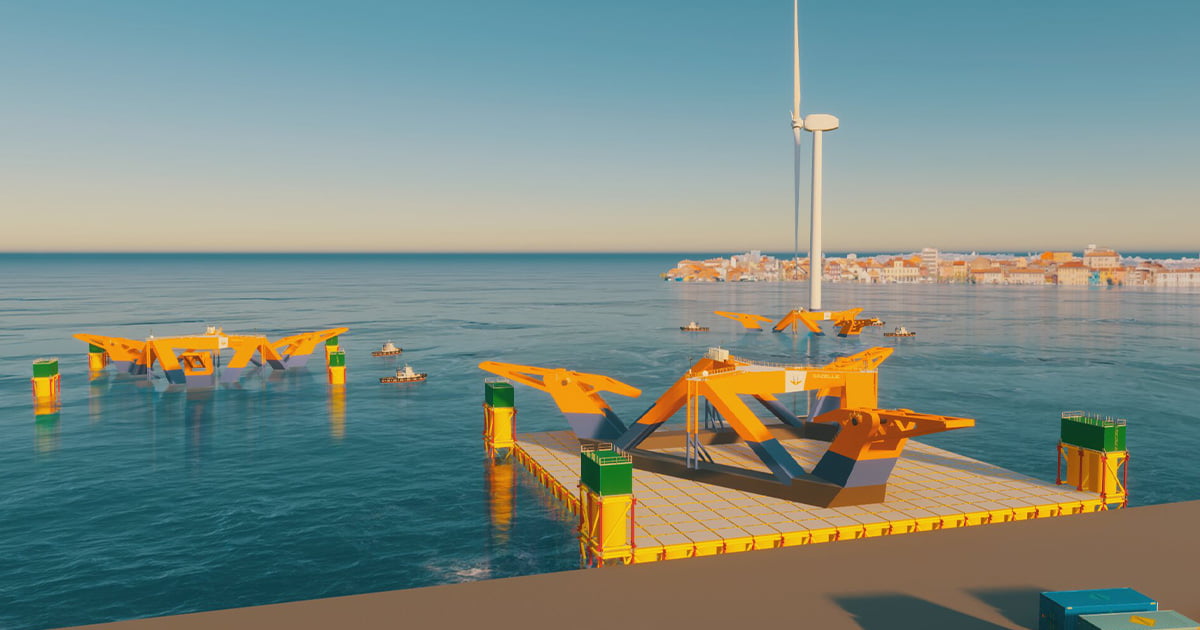Lucas Lowe-Houghton, Chief Revenue Officer at Tugdock, said, “This exciting partnership is an industry-first, representing the power of collaboration to unleash the full potential of innovation. This collaboration will unlock great opportunities for both partners as well as help to accelerate the floating offshore wind industry.”
The design of Gazelle Wind Power’s platform includes a revolutionary patented dynamic mooring system that eliminates pitch and balance movement in response to the external forces of wind, waves, and tide. The platform’s modular design allows for scalable and adaptable configurations, making it a more affordable and accessible solution for deep water deployment. Gazelle Wind Power is currently in discussions with a number of developers with the potential to secure in excess of 5GW of projects for delivery before 2035.
The modularity of Gazelle’s components enables the offshore wind platform modules to be fabricated cost-effectively in shipyards and then transported to an assembly port, adjacent to a wind farm to be completed. The Tugdock Submersible Platform is a patented technology that supports the deployment of commercial-scale floating wind by providing a build and launch platform that overcomes port constraints. The structure combines a steel frame and patented airlift bags to act as additional buoyancy or as a submersible platform for lifting or launching heavy marine structures.
“Working with Tugdock, we have the ideal way to assemble our modular platform, using minimal port space. While the Gazelle platform possesses a naturally low draft, there are significant benefits to assembling the modules on the Tugdock platform, which doubles as the assembly fixture and launch method, speeding up platform assembly and getting our platform into the water in a safe, and cost-effective way. This partnership is driving the production rates up and costs down. Our vision is to be the benchmark for Floating Offshore Platforms across global markets and make a significant contribution to net-zero goals. This new collaboration is a significant step on that journey,” commented Jon Salazar, CEO of Gazelle Wind Power.
The first project for the new partnership will be Italy’s largest offshore wind farm, the Molise Offshore Wind Farm project in the Adriatic Sea, where the combined technologies will help install 70 turbines, aiming to generate 1.05 GW of power. The Molise Offshore Wind Farm will cover a total area of 219 square kilometres, and the turbines will be located in waters spanning depths of a minimum of 88 metres to a maximum of 126 metres. The first platform is planned to be launched in January 2028.
Shane Carr, CEO of Tugdock, said, “This pioneering partnership combines the advantages of two innovative modular technologies that complement each other perfectly. This represents a game-changing solution for developers and a major step forward for offshore renewable energy.”
About the Molise Wind Farm
The Molise Offshore Wind Farm project, managed by Maverick Srl and controlled by Green Bridge, involves the installation of 70 wind turbines with a total capacity of 1.05 GW, located in the Adriatic Sea, off the Molise coast, Italy. This is Italy’s largest offshore project in terms of installed capacity. The project features cutting-edge Vestas V236-15.0 MW turbines, known for their advanced capabilities and operational efficiency.
One key recent revision to the project is the use of floating platforms for offshore electrical stations, significantly reducing the environmental impact. Additionally, modifications to the project’s layout now provide direct access to the port of Termoli, addressing the needs of the local fishing community.
The ‘Molise Offshore Wind Farm’ is expected to produce an average annual productivity of 2,673,300 MWh, making a substantial contribution to emissions reduction. Over the plant’s 30-year lifespan, it is estimated to prevent the release of 35,163,170 tonnes of CO2, 10,430 tonnes of SO2, and 5,110 tonnes of NOx into the atmosphere.
This ambitious project represents a total investment of 2.1 billion euros.

